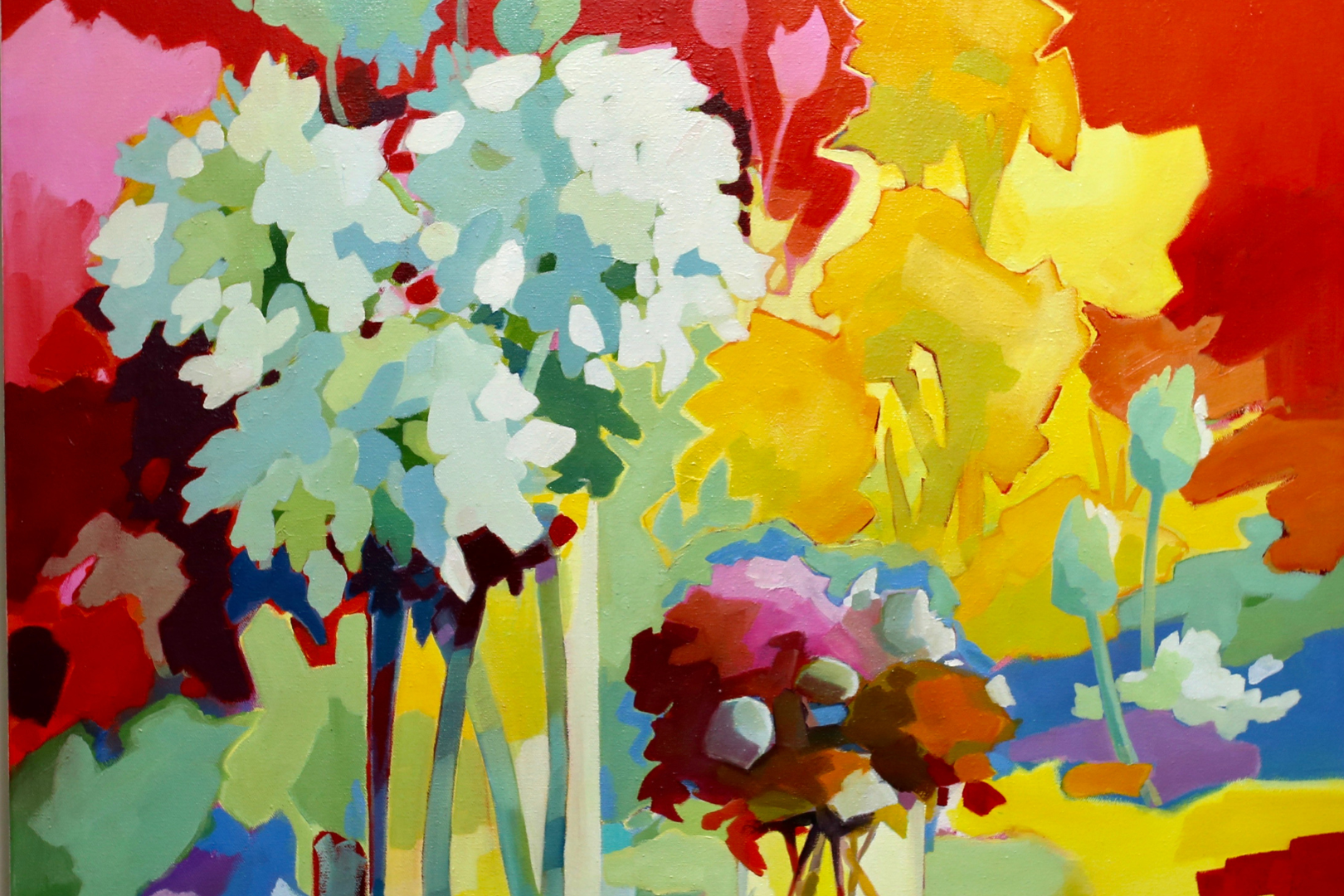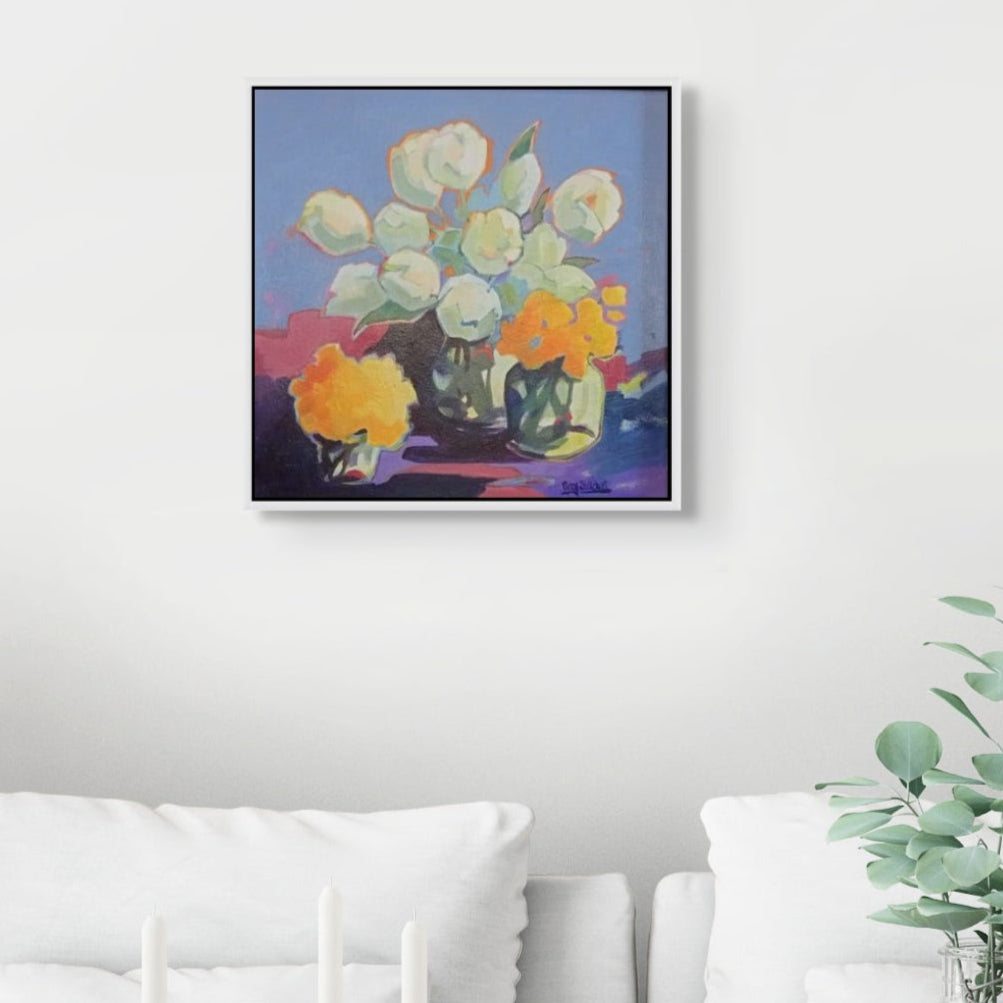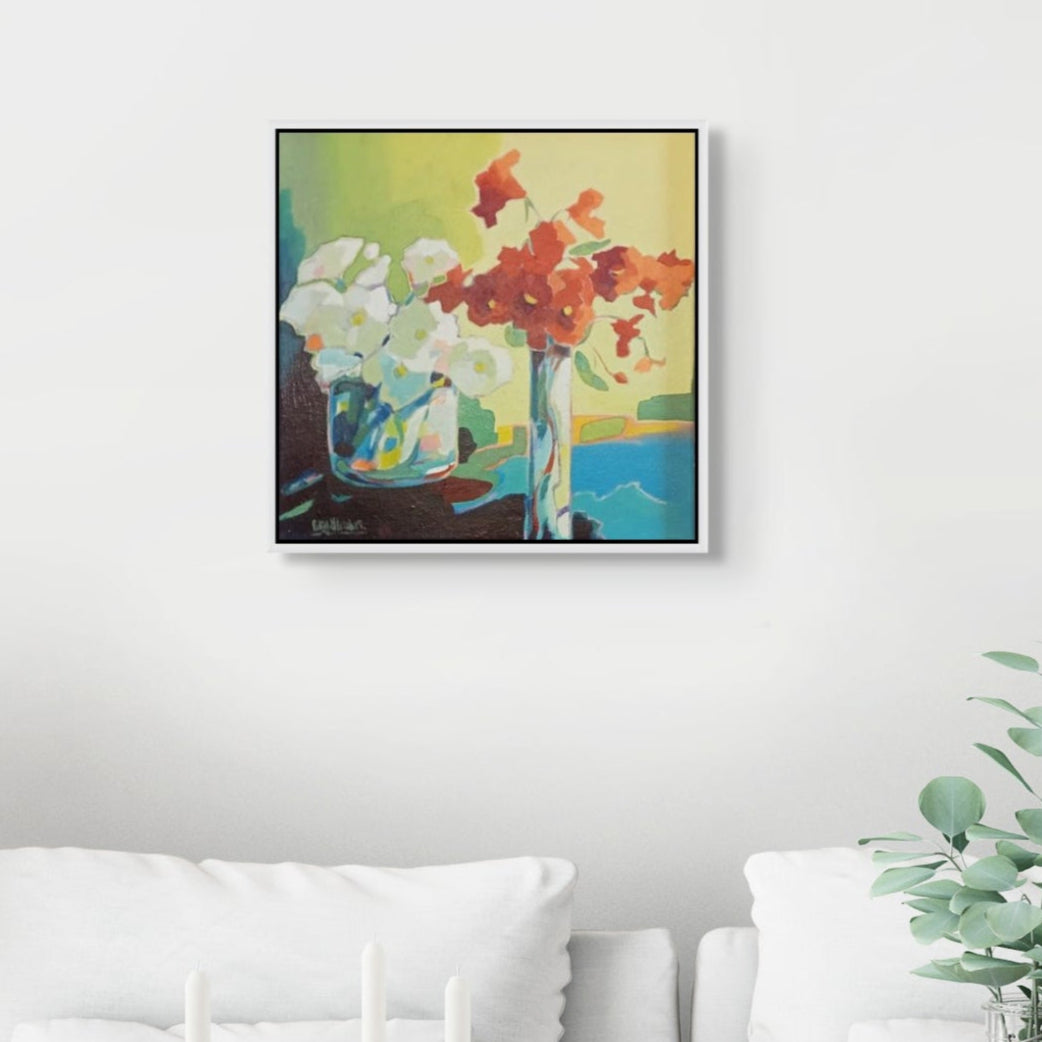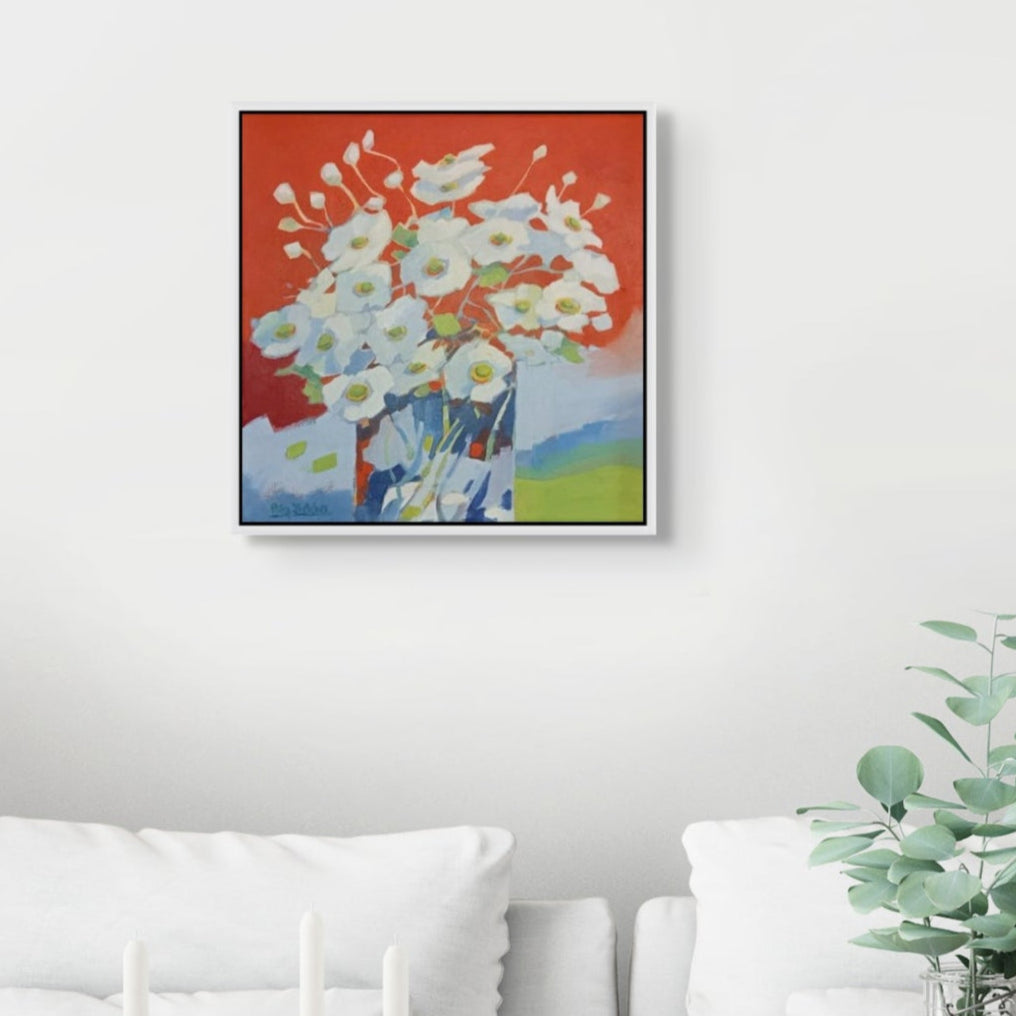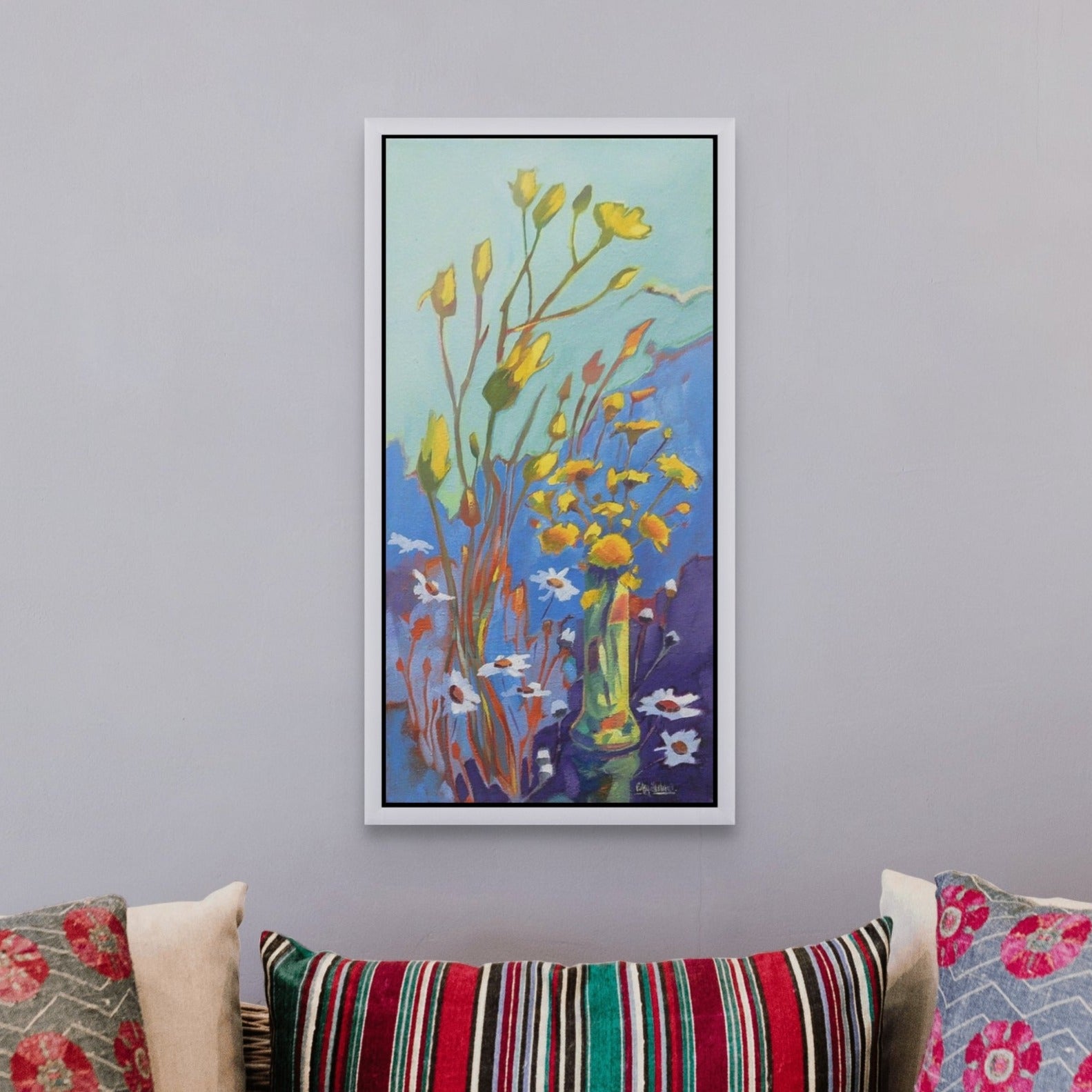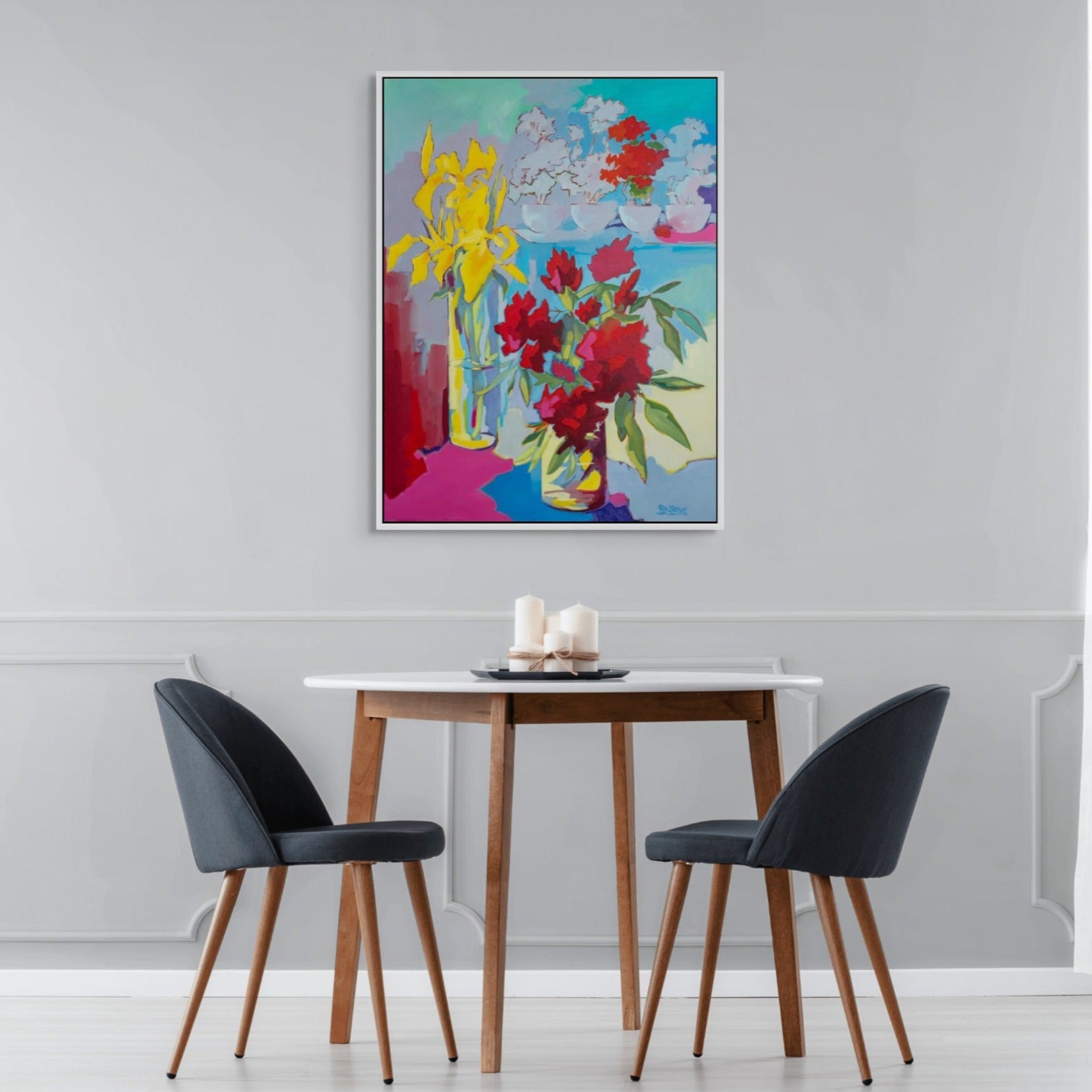Patsy’s paintings serve as a panacea, an opportunity to indulge the senses and celebrate what is good in the world, inviting viewers to dwell on that goodness.
An understanding of the Vanitas tradition enhances engagement with the work. Vanitas, a genre of still life painting that flourished in the Netherlands during the early 17th century, derives its name from the Latin word for "vanity." These compositions traditionally featured symbolic objects representing the inevitability of death and the fleeting nature of earthly achievements and pleasures (Vanitas, Britannica.com). Rooted in a deeply Christian context, the genre’s original purpose was to urge viewers to reflect on their mortality and repent (Britannica). Early examples were somber and muted in tone, but over time the style evolved - becoming not only a reflection on transience but also a testament to the artist’s skill and, ultimately, a statement of ownership.
In a world where the doomsday clock seems permanently poised near midnight, these contemporary works call viewers to embrace life in its fullness. Flowers, once used in Vanitas paintings as symbols of transience, are rendered here in vivid, saturated colour - an expression of joie de vivre and a striking contrast to the oppressive presence of black. The immersive use of colour and life in the Patsy’s work offers a visual antidote to the widespread heaviness and emotional fatigue that has intensified as nations across the globe confront war and suffering.
Patsy’s paintings serve as a panacea, an opportunity to indulge the senses and celebrate what is good in the world, inviting viewers to dwell on that goodness.
An understanding of the Vanitas tradition enhances engagement with the work. Vanitas, a genre of still life painting that flourished in the Netherlands during the early 17th century, derives its name from the Latin word for "vanity." These compositions traditionally featured symbolic objects representing the inevitability of death and the fleeting nature of earthly achievements and pleasures (Vanitas, Britannica.com). Rooted in a deeply Christian context, the genre’s original purpose was to urge viewers to reflect on their mortality and repent (Britannica). Early examples were somber and muted in tone, but over time the style evolved - becoming not only a reflection on transience but also a testament to the artist’s skill and, ultimately, a statement of ownership.
In a world where the doomsday clock seems permanently poised near midnight, these contemporary works call viewers to embrace life in its fullness. Flowers, once used in Vanitas paintings as symbols of transience, are rendered here in vivid, saturated colour - an expression of joie de vivre and a striking contrast to the oppressive presence of black. The immersive use of colour and life in the Patsy’s work offers a visual antidote to the widespread heaviness and emotional fatigue that has intensified as nations across the globe confront war and suffering.
Patsy’s paintings serve as a panacea, an opportunity to indulge the senses and celebrate what is good in the world, inviting viewers to dwell on that goodness.
An understanding of the Vanitas tradition enhances engagement with the work. Vanitas, a genre of still life painting that flourished in the Netherlands during the early 17th century, derives its name from the Latin word for "vanity." These compositions traditionally featured symbolic objects representing the inevitability of death and the fleeting nature of earthly achievements and pleasures (Vanitas, Britannica.com). Rooted in a deeply Christian context, the genre’s original purpose was to urge viewers to reflect on their mortality and repent (Britannica). Early examples were somber and muted in tone, but over time the style evolved - becoming not only a reflection on transience but also a testament to the artist’s skill and, ultimately, a statement of ownership.
In a world where the doomsday clock seems permanently poised near midnight, these contemporary works call viewers to embrace life in its fullness. Flowers, once used in Vanitas paintings as symbols of transience, are rendered here in vivid, saturated colour - an expression of joie de vivre and a striking contrast to the oppressive presence of black. The immersive use of colour and life in the Patsy’s work offers a visual antidote to the widespread heaviness and emotional fatigue that has intensified as nations across the globe confront war and suffering.
Spring
$1,950.00
Snowballs in Paradise
$1,950.00
Spring
$950.00
Nasturtium
$950.00
Anemones
$950.00
Heydey
$550.00
No Hiding Iris Roddy
$1,980.00


